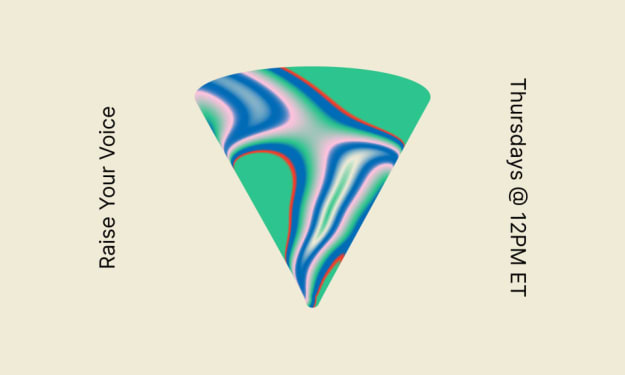How to Stop Carrying a Wounded Inner Child Into Your Relationships
Transforming Your Relationships through Inner Child Healing

Are you still carrying a wounded inner child into your relationships?
I used to carry it till the other day. Childhood is a very delicate and fragile stage in our lives. Any unpleasant childhood incident could have a long-lasting, even a life-long impact on our psychology.
Our past experiences, especially during childhood, can leave deep emotional wounds that shape our adult lives and relationships.
The concept of the wounded inner child refers to the unresolved pain and trauma from childhood that continues to affect us in our present relationships.
If an inner child is living in you then it's great news, it’s a positive affair. All sensible cum successful people carry their childhood in different forms and fronts. It helps you to grow. It helps you to enjoy your current state in the yardstick of childhood. The child in you makes you a better mature human being. It helps you to keep life elements like ‘the sense of surprise’ and ‘the sense of wonder ‘till your death.
But if the inner child that you are carrying is wounded then it would have depressive and sometimes deadly implications.
Hope you have heard the quote from Arthur Golden: “A wounded tiger is a dangerous beast.”
It would create hurdles in your personal growth. Your career could see take a nosedive and fall like a hysterical octopus on the ground.
The wounded inner child would ruin your relationships and make them a spoiled sausage.
We all know how important relationships in our personal and professional lives are. Relationships are foundations on which we erect ‘Burj Khalifa’ of networks, collaborations, and engagements. Relationships are vital for the circulation of emotion, ambition, money, honey, respect, and prospect.
As you know...relationships are as delicate as china cups. Once broken can be mended but there will always be cracks.
Don’t hang on with the following board hanging from your brain, towards your belly.
“BEWARE OF THE LITTLE TOT”
It’s time to address that little tot who is seating silently inside you which could vomit venom violently on your relationships.
It is prudent to pinpoint the pain-points and plan to pound the problem from its position.
How to handle the wounded inner child?
I would love to take you with me to explore the impact of carrying a wounded inner child into relationships and discover strategies to heal and foster healthier connections.
Recognising the Signs of a Wounded Inner Child
1. Emotional Triggers and Patterns
• Identifying recurring emotional reactions that stem from past traumas
• Noticing patterns of behaviour that hinder relationship growth and connection
2. Fear of Abandonment or Rejection
• Understanding how childhood experiences of abandonment or rejection influence adult relationships
• Recognising signs of fear and insecurity in relationships
3. Difficulty in Setting Boundaries
• Exploring challenges in establishing and maintaining healthy boundaries
• Understanding how lack of boundaries affects relationships
4. People-Pleasing Tendencies
• Discovering the origins of people-pleasing behaviors in childhood
• Examining the negative impact of people-pleasing on relationships and personal well-being
5. Struggles with Trust and Intimacy
• Investigating trust issues and intimacy barriers resulting from childhood wounds
• Understanding the connection between trust and building deep, meaningful connections
Nurturing Self-Compassion and Self-Love
1. Cultivating Self-Awareness
• Developing an understanding of your emotions, triggers, and patterns
• Reflecting on how past experiences shape your current self-perception
2. Practicing Self-Care
• Engaging in activities that promote self-nurturing and emotional well-being
• Prioritising self-care as a vital aspect of healing and personal growth
3. Affirmations and Positive Self-Talk
• Harnessing the power of positive affirmations to reframe self-perception
• Using self-talk techniques to build self-compassion and self-love
4. Engaging in Activities that Bring Joy
• Identifying activities that spark joy and reconnect with your inner child
• Making time for hobbies, interests, and creative outlets that promote emotional healing
5. Seeking Professional Help if Needed
• Recognizing the value of therapy or counselling in facilitating inner child healing
• Seeking guidance from trained professionals to address deep-seated emotional wounds
Healing Childhood Trauma
1. Acknowledging Past Wounds
• Validating and acknowledging the pain and trauma experienced in childhood
• Accepting that healing is a necessary and transformative journey
2. Processing and Expressing Emotions
• Creating safe spaces to explore and express pent-up emotions
• Utilising techniques such as journaling, art, or therapy to release emotional baggage
3. Seeking Therapy or Counseling
• Engaging in therapy or counselings to work through unresolved childhood trauma
• Finding a qualified professional who specialises in trauma and inner child healing
4. Engaging in Inner Child Healing Exercises
• Participating in inner child healing activities, such as visualisation or dialogue
• Reconnecting with your inner child to address and heal past wounds
5. Releasing the Weight of Past Experiences
• Letting go of resentment, guilt, and shame associated with past experiences
• Embracing forgiveness and allowing space for personal growth and healing
Building Healthy Boundaries
1. Understanding the Importance of Boundaries
• Recognising that boundaries are essential for maintaining healthy relationships and protecting your well-being - Understanding the role boundaries play in establishing respect and fostering emotional safety
2. Identifying Personal Limits and Needs
• Reflecting on your values, desires, and limits within relationships
• Learning to prioritise self-care and communicate your needs effectively
3. Communicating Boundaries Effectively
• Learning assertive communication skills to express your boundaries clearly and respectfully
• Setting boundaries with compassion, understanding that they are essential for your well-being
4. Honouring and Respecting Others' Boundaries
• Recognising and respecting the boundaries set by others in your relationships
• Creating an atmosphere of mutual respect and understanding
5. Regularly Reassessing and Adjusting Boundaries
• Understanding that boundaries may evolve over time as you grow and change
• Periodically evaluating and adjusting your boundaries to align with your personal growth
Developing Emotional Resilience
1. Learning to Regulate Emotions
• Developing emotional intelligence and practising self-regulation
• Exploring techniques such as deep breathing, mindfulness, and meditation
2. Building Coping Mechanisms
• Discovering healthy coping mechanisms for managing stress and emotional challenges
• Engaging in activities such as exercise, journaling, or seeking support from loved ones
3. Practising Mindfulness and Meditation
• Cultivating present-moment awareness to enhance emotional well-being
• Incorporating mindfulness and meditation practices into your daily routine
4. Engaging in Stress-Reducing Activities
• Identifying activities that help you relax and unwind, such as hobbies or nature walks
• Prioritising self-care and stress reduction to maintain emotional balance
5. Surrounding Yourself with a Supportive Network
• Cultivating relationships with people who support your healing journey
• Seeking support from trusted friends, family, or support groups
Cultivating Healthy Communication
1. Active Listening and Empathy
• Practising active listening skills to foster understanding and connection
• Cultivating empathy to enhance effective communication and emotional intimacy
2. Speaking from the Heart
• Learning to express your thoughts and feelings honestly and authentically
• Sharing openly with your partner while maintaining respectful communication
3. Expressing Needs and Desires Assertively
• Communicating your needs, desires, and boundaries in a clear and assertive manner
• Finding a balance between advocating for yourself and considering your partner's needs
4. Conflict Resolution Skills
• Developing constructive conflict resolution strategies to navigate relationship challenges
• Learning healthy communication techniques to resolve conflicts with empathy and respect
5. Avoiding Blame and Criticism
• Practising non-judgment and avoiding blame or criticism in communication
• Encouraging a supportive and understanding atmosphere within your relationships
Letting Go of Past Baggage
1. Forgiving Yourself and Others
• Embracing forgiveness as a transformative tool for healing
• Releasing resentment and guilt to create space for growth and new beginnings
2. Releasing Resentment and Anger
• Engaging in forgiveness practices to let go of deep-seated resentment and anger
• Seeking closure and understanding to move forward in your relationships
3. Embracing Acceptance and Moving Forward
• Accepting the past as part of your journey without allowing it to define your present
• Embracing personal responsibility and choosing to move forward with grace
4. Focusing on Personal Growth and Self-Improvement
• Prioritising personal development and continuous growth
• Seeking opportunities for self-improvement and embracing new experiences
5. Celebrating Progress and Small Victories
• Recognising and celebrating the progress you make in healing your inner child
• Acknowledging the small victories along the way to encourage yourself
Embracing Vulnerability and Intimacy
1. Opening Up to Trust
• Recognising the importance of trust in building meaningful connections
• Taking gradual steps to open up and trust others in your relationships
2. Sharing Your Authentic Self
• Embracing vulnerability by expressing your true thoughts, feelings, and experiences
• Allowing others to see the real you and fostering deeper connections
3. Allowing Yourself to Be Seen and Heard
• Giving yourself permission to be vulnerable and express your needs and desires
• Creating a safe space where you can be seen and heard without judgement
4. Building Emotional Connections
• Engaging in deep and meaningful conversations that foster emotional intimacy
• Prioritising emotional connection and nurturing relationships beyond surface-level interactions
5. Embracing the Beauty of Vulnerability
• Understanding that vulnerability is a strength that allows for genuine connections
• Embracing the richness and depth that vulnerability brings to your relationships
End Note
Healing your wounded inner child is a transformative journey that positively impacts your relationships. By recognizing the signs of a wounded inner child, nurturing self-compassion and self-love, healing childhood trauma, building healthy boundaries, developing emotional resilience, cultivating healthy communication, letting go of past baggage, and embracing vulnerability, you can break free from the patterns that hinder your relationships.
Remember, healing takes time and effort, but it is a worthwhile investment in yourself and your connections with others. As you embark on this journey, be patient and kind to yourself. Seek support from professionals or trusted individuals who can guide you along the way.
By healing your inner child, you empower yourself to create healthier, more fulfilling relationships based on authenticity, trust, and emotional well-being. Embrace the opportunity to grow, evolve, and build the relationships you deserve.
Thanks for reading this article.
If you enjoy reading this post, got help, knowledge, inspiration, and motivation through it, and want to support my efforts — Can you Buy Me A Coffee? Your support really makes a difference.
Get Inspired at Instagram.
Read More From Me: https://linktr.ee/ranjanbaral
#InnerChildHealing #HealingRelationships #EmotionalWellness #SelfLoveJourney #BoundariesMatter #EmotionalResilience #AuthenticConnections #LettingGoOfThePast #VulnerableAndStrong #TransformingRelationships
About the Creator
Ranjan Baral
Author | Freelance writer | E-books | Online Money Making | Tips & Tricks | Motivation | Let’s connect → linktr.ee/ranjanbaral






Comments
There are no comments for this story
Be the first to respond and start the conversation.